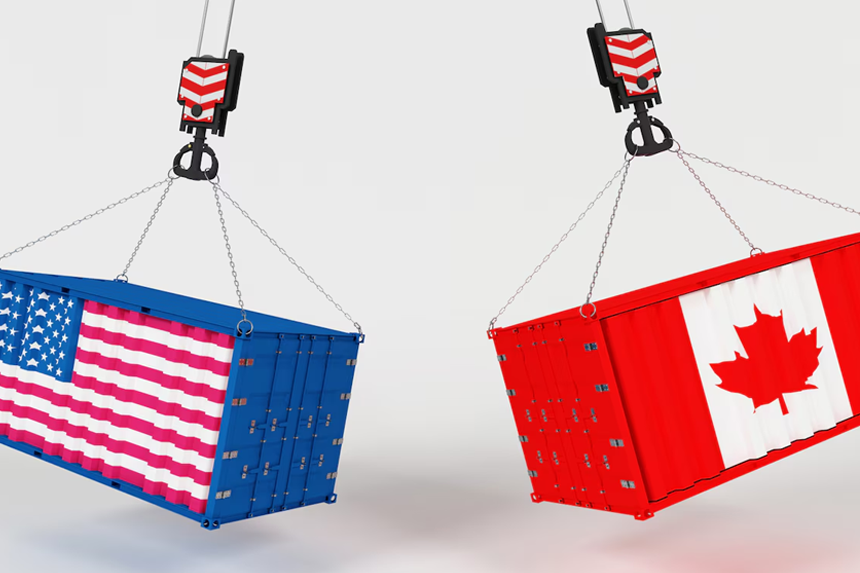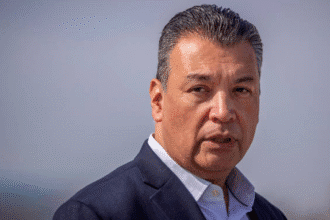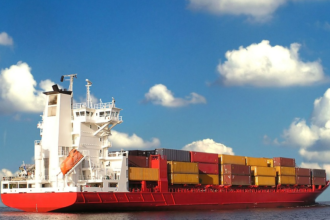Canada finds itself at the crossroads of a potentially devastating trade war with its largest trading partner, the United States. Prime Minister Justin Trudeau, initially firm in his warnings about economic hardship, is now pivoting to a more conciliatory approach. He aims to help President Donald Trump achieve the “golden age” promised in Trump’s inauguration speech, while also protecting Canada’s economic interests in the face of a looming US-Canada trade war.
- What Is the Threat of Tariffs?
- What Options Does Canada Have: Retaliation or Appeasement?
- How Is Canada Using Direct Diplomacy with Trump?
- How Vulnerable Is Canada’s Economy?
- What Role Does Security and the Border Play?
- How Is Chaos Used as a Negotiating Strategy?
- What Is the Future of Trade Agreements?
- Conclusion: A Nation at the Crossroads
“Canada is a safe, secure, and reliable partner in an uncertain world,” Trudeau emphasized this week. He warned that failing to strengthen bilateral ties would leave the US reliant on less favorable alternatives like Russia, China, or Venezuela.
What Is the Threat of Tariffs?
The catalyst for this tension is Trump’s threat to impose 25% blanket tariffs on Canadian imports. Such a move would be catastrophic for Canada, a country where 75% of exports are US-bound. In contrast, Canada accounts for a much smaller 17% of US exports, giving Washington a distinct advantage in a prolonged trade standoff.
While Canada was initially relieved when Trump’s inaugural address made no mention of tariffs, optimism quickly faded. A late-night remark in the Oval Office reversed the script, with Trump musing about steep levies on imports from Canada and Mexico by 1 February. The prospect of a US-Canada trade war is now imminent.
What Options Does Canada Have: Retaliation or Appeasement?
Canada now faces a critical decision: retaliate or appease. The Trudeau administration has considered targeted tariffs on high-profile US goods, such as Florida orange juice, and dollar-for-dollar countermeasures. This approach worked during Trump’s first presidency when Canada responded to US tariffs on steel and aluminum.
However, this time around, Trump’s objectives and timelines are less clear, making it harder for Canada to formulate an effective response. The lack of consensus within the Canadian government further complicates matters.
Trudeau, who is expected to step down soon, has hinted at the “nuclear option” of taxing or embargoing energy exports to the US. Yet, Premier Danielle Smith of Alberta, Canada’s oil-rich province, opposes using energy as a bargaining chip. As the US-Canada trade war threat looms, unity within the government is critical.
How Is Canada Using Direct Diplomacy with Trump?
Both Trudeau and Smith have taken the unusual step of personally visiting Florida to appeal directly to Trump. Speaking to reporters on Tuesday, Trudeau appeared frustrated but remained resolute.
“We’ve been here before,” he said. “The first Trump presidency represented moments of uncertainty and threats of instability that we were able to work through constructively.”
Meanwhile, Canada’s ambassador in Washington DC, Kirsten Hillman, struck a more optimistic tone. “We have now moved from a more abstract discussion to a more concrete discussion,” she said, referencing Trump’s newly commissioned “America First” trade review. The review outlines US trade priorities, emphasizing national security and economic advantage. The stakes remain high amid the looming US-Canada trade war.
How Vulnerable Is Canada’s Economy?
The stakes are high. Economists warn that Canada’s GDP could shrink by up to 5.6% if the US imposes the threatened tariffs. Compounding this pressure is Canada’s heavy reliance on the US market. Despite decades of effort, diversification has proven elusive due to the geographic and cultural proximity between the two nations.
“There’s been no evidence that Canada is able to diversify at all, and so we’re kind of stuck with option number one, which is to avoid a trade war at all costs,” said a public affairs expert. As the prospect of a US-Canada trade war becomes more real, economic diversification is an increasingly urgent challenge
What Role Does Security and the Border Play?
Trump has tied the tariff threat to border security, accusing Canada of allowing “millions” of unlawful migrants to cross into the US. Ottawa responded with a promise to spend C$1.3 billion ($900m; £700m) on enhanced border security. However, Trump dismissed this effort as insufficient.
He has also criticized Canada for inadequate defense spending and for what he perceives as a trade imbalance. Experts attribute this deficit to factors like fluctuating energy prices, one of Canada’s primary exports to the US.
How Is Chaos Used as a Negotiating Strategy?
Trump’s approach to negotiation—characterized by unpredictability—further complicates the situation. Analysts noted that this “uncertainty and chaos” is often a deliberate strategy.
“If he scares the hell out of us, he probably thinks that we’re going to be ready to concede things,” one expert explained. “He may or may not be right there.”
Tariffs are only one aspect of Trump’s broader trade policy. The president has also threatened levies on Chinese, European, and Russian exports and proposed creating an External Revenue Service to collect “foreign trade-related revenues.”
What Is the Future of Trade Agreements?
The Trump administration is eyeing a renegotiation of the North American free trade agreement, scheduled for 2026. Sources suggest that Trump wants to expedite these talks. This looming renegotiation adds another layer of uncertainty to Canada’s precarious economic situation.
Conclusion: A Nation at the Crossroads
For Canada, the path forward is fraught with challenges. Trudeau’s government is scrambling to avoid a trade war by pitching a stronger energy and national security partnership with the US.
While the long-term solution may lie in trade diversification, experts emphasized that this is a long-standing challenge for Canada. For now, the nation’s survival depends on avoiding a direct confrontation with its powerful southern neighbor.
“The negotiating advantage rests with Trump,” one observer concluded, underscoring the precarious position Canada finds itself in as it faces this high-stakes standoff.








